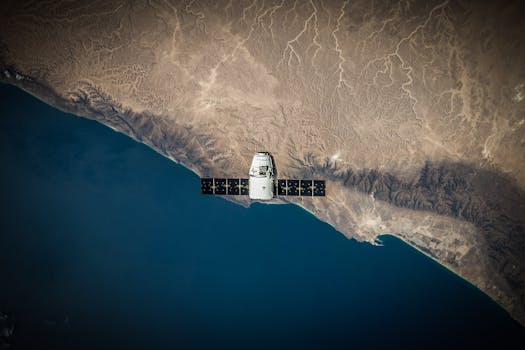
MEO Satellites: Revolutionizing Global Communication with Medium Earth Orbit Technology
MEO satellites, or Medium Earth Orbit satellites, are a type of satellite that operates at an altitude of around 2,000 to 36,000 kilometers above the Earth’s surface. This range allows them to provide global coverage while minimizing latency and signal delay. As a result, MEO satellites have become a crucial component of modern communication systems, enabling faster and more reliable connections for various applications.
The use of MEO satellites has been gaining momentum in recent years, driven by advancements in technology and the increasing demand for high-speed and low-latency communication services. One of the primary advantages of MEO satellites is their ability to provide broadband connectivity to remote and underserved areas, where traditional fiber-optic infrastructure is lacking. This has made them an attractive solution for industries such as aviation, maritime, and rural broadband.
How MEO Satellites Work

MEO satellites work by transmitting and receiving signals to and from Earth stations, which are equipped with large antennas and transceivers. The signals are then routed through the satellite’s onboard processor and transmitted back to Earth, where they are received by other Earth stations or directly by user terminals. The medium earth orbit allows MEO satellites to provide a higher elevation angle than low earth orbit (LEO) satellites, resulting in a stronger signal and better performance.
The MEO constellation typically consists of a network of satellites that are evenly spaced around the Earth, providing continuous coverage and minimizing handovers between satellites. This ensures that users experience uninterrupted service, even when moving at high speeds or in areas with limited visibility.
Applications of MEO Satellites

MEO satellites have a wide range of applications, including broadband connectivity, mobile backhaul, and IoT (Internet of Things) services. They are particularly useful for industries that require high-speed and low-latency communication, such as finance, healthcare, and education. Additionally, MEO satellites can provide critical communication services during natural disasters or emergencies, when traditional infrastructure is damaged or destroyed.
In the aviation sector, MEO satellites are used to provide in-flight connectivity, enabling passengers to stay connected and productive during flights. In the maritime industry, they provide critical communication services for ships and vessels, ensuring safe and efficient navigation. For rural broadband, MEO satellites can provide high-speed internet access to remote communities, bridging the digital divide and promoting economic development.
Benefits and Challenges of MEO Satellites

The benefits of MEO satellites are numerous, including faster and more reliable connections, global coverage, and cost-effectiveness. They also offer a higher level of security and resilience than traditional fiber-optic networks, as they are less vulnerable to cyber threats and physical damage.
However, MEO satellites also face several challenges, including regulatory hurdles, interference from other satellites, and the high cost of launching and maintaining a constellation. Additionally, the increasing number of satellites in medium earth orbit raises concerns about space debris and the long-term sustainability of the technology.
Despite these challenges, the future of MEO satellites looks promising, with many companies and organizations investing heavily in the development of new constellations and technologies. As the demand for high-speed and low-latency communication services continues to grow, MEO satellites are poised to play an increasingly important role in shaping the future of global communication.
See more:




